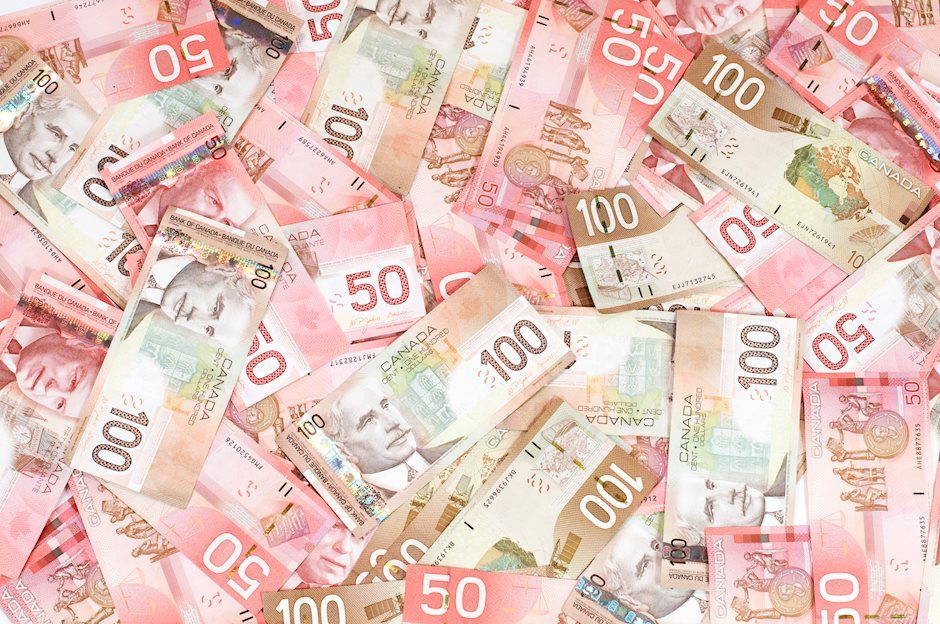USD/CAD defends 1.4000 amid renewed USD buying, trade war fears and weaker Oil prices
- USD/CAD struggles to gain any meaningful traction, though the downside remains limited.
- Rebounding US bond yields help revive USD demand and act as a tailwind for the major.
- Weaker Oil prices undermine the Loonie and also lend support amid Trump’s tariff threats.

The USD/CAD pair remains on the defensive for the second straight day on Thursday, albeit it manages to hold above the 1.4000 psychological mark through the Asian session. Moreover, the fundamental backdrop warrants some caution before positioning for an extension of this week's pullback from the 1.4175-1.4180 region, or the highest level since April 2020.
US President-elect Donald Trump earlier this week pledged to impose big tariffs on all products coming into the US from Mexico and Canada, which would end a regional free trade agreement and trigger trade wars. Furthermore, Crude Oil prices languish near the weekly low amid concerns about slowing fuel demand growth in the US and China – the world's top consumers. This, in turn, is seen undermining the commodity-linked Loonie and acting as a tailwind for the USD/CAD pair amid the emergence of some US Dollar (USD) dip-buying.
Wednesday's US macro data dump pointed to a still resilient US economy and stalling inflation progress, suggesting that the Federal Reserve (Fed) might be cautious on further interest rate cuts. This triggers a fresh leg up in the US Treasury bond yields and assists the USD Index (DXY), which tracks the Greenback against a basket of currencies, in reversing a part of the previous day's slide to a two-week low. Apart from this, geopolitical risks benefit the safe-haven buck and turn out to be another factor lending support to the USD/CAD pair.
Traders, however, seem reluctant to place aggressive bets amid relatively thin trading volumes on the back of the Thanksgiving Day holiday in the US and ahead of the OPEC+ meet on Sunday. Nevertheless, the aforementioned supporting factors suggest that the path of least resistance for the USD/CAD pair is to the upside. Hence, any further corrective decline might still be seen as a buying opportunity and remain limited.
Canadian Dollar FAQs
The key factors driving the Canadian Dollar (CAD) are the level of interest rates set by the Bank of Canada (BoC), the price of Oil, Canada’s largest export, the health of its economy, inflation and the Trade Balance, which is the difference between the value of Canada’s exports versus its imports. Other factors include market sentiment – whether investors are taking on more risky assets (risk-on) or seeking safe-havens (risk-off) – with risk-on being CAD-positive. As its largest trading partner, the health of the US economy is also a key factor influencing the Canadian Dollar.
The Bank of Canada (BoC) has a significant influence on the Canadian Dollar by setting the level of interest rates that banks can lend to one another. This influences the level of interest rates for everyone. The main goal of the BoC is to maintain inflation at 1-3% by adjusting interest rates up or down. Relatively higher interest rates tend to be positive for the CAD. The Bank of Canada can also use quantitative easing and tightening to influence credit conditions, with the former CAD-negative and the latter CAD-positive.
The price of Oil is a key factor impacting the value of the Canadian Dollar. Petroleum is Canada’s biggest export, so Oil price tends to have an immediate impact on the CAD value. Generally, if Oil price rises CAD also goes up, as aggregate demand for the currency increases. The opposite is the case if the price of Oil falls. Higher Oil prices also tend to result in a greater likelihood of a positive Trade Balance, which is also supportive of the CAD.
While inflation had always traditionally been thought of as a negative factor for a currency since it lowers the value of money, the opposite has actually been the case in modern times with the relaxation of cross-border capital controls. Higher inflation tends to lead central banks to put up interest rates which attracts more capital inflows from global investors seeking a lucrative place to keep their money. This increases demand for the local currency, which in Canada’s case is the Canadian Dollar.
Macroeconomic data releases gauge the health of the economy and can have an impact on the Canadian Dollar. Indicators such as GDP, Manufacturing and Services PMIs, employment, and consumer sentiment surveys can all influence the direction of the CAD. A strong economy is good for the Canadian Dollar. Not only does it attract more foreign investment but it may encourage the Bank of Canada to put up interest rates, leading to a stronger currency. If economic data is weak, however, the CAD is likely to fall.
Author

Haresh Menghani
FXStreet
Haresh Menghani is a detail-oriented professional with 10+ years of extensive experience in analysing the global financial markets.

















